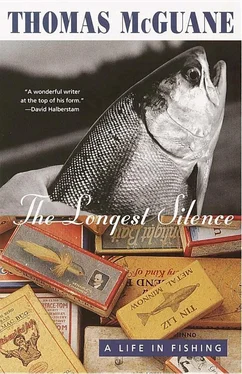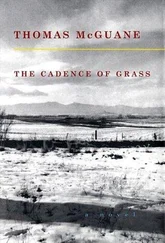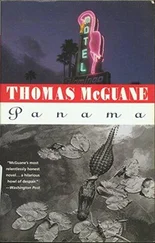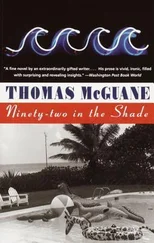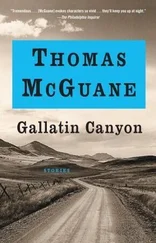I worked out two or three bonefish patterns for the inside bank of Loggerhead Key. The best of these was a turnoff point where bonefish who were contouring the bank hit a small ridge and turned up onto the flat itself. By positioning myself at this, I would be able to get casts off to passing fish and to see a good piece of the bank, downlight, until noon.
One day I went out and staked the boat during the middle-incoming water of another set of new-moon tides. I caught one bonefish early in the tide, a lively fish that went a hundred yards on his first run and doggedly resisted me for a length of time that was all out of proportion to his weight. I released him after giving him a short revival session and then just sat and looked at the water. I could see Woody fishing with a customer, working the outside of the bank for tarpon.
It was a queer day to begin with. Vital light flashed on and off around the scudding clouds, and there were slight foam lines on the water from the wind. The basin that shelved off from my bank was active with diving birds, particularly great brown pelicans, whose wings sounded like luffing sails and who ate with submerged heads while blackheaded gulls tried to rob them. The birds were drawn here by a school of mullet that was making an immense mud hundreds of yards across. The slick glowed in the sun a quarter of a mile to the south. I didn’t pay much attention until it began by collective will or chemical sensors to move onto my bank. Inexorably, the huge disturbance progressed and flowed toward me. In the thinner water the mullet school was compressed, and the individual fish became easier targets for predators. Big oceanic barracuda were among them, slashing and streaking through the school like bolts of lightning. Simultaneously, silver sheets of mullet, sometimes an acre in extent, burst out of the water and rained down again. In time my skiff was in the middle of it, the opaque water was inch-by-inch alive.
Some moments later, perhaps seventy feet astern of me, a large blacktip shark swam up onto the bank and began traveling with grave sweeps of its tail through the fish, not as yet making a move for them. Mullet and smaller fish nevertheless showered out in front of the shark as it coursed past. Behind the shark I could see another fish faintly flashing. I supposed it was a jack crevalle, a pelagic fish, strong for its size, that often follows sharks. I decided to cast anyway at a distance that was all I could manage. I got off one of my better shots, which nevertheless fell slightly behind target. I was surprised to see the fish drop back to the fly, turn and elevate high in the water, then take. A permit.
I set the hook sharply and the fish started down the flat. Remembering my last episode, I kept the loose, racing line well away from the reel handle for the instant the fish took to consume it. Then the fish was on the reel. When I lowered the rod tip and cinched the hook, the fish began to accelerate, staying on top of the flat, where I could witness its wildly extending wake. Everything was holding together: the hookup was good, the knots were good. At 150 yards the fish stopped, and I got back line. I kept at it until the fish was within 80 yards of the boat. Then it suddenly made a wild, undirected run, not permitlike at all, and I could see the shark chasing it. The blacktip struck and missed three or four times, making explosions in the water that sickened me. I released the drag, untied the boat, and started the engine. Woody started poling toward me at the sound of my engine, his mystified client dragging a line astern.
There was hardly enough water to move in. The prop was half buried, and even at full throttle I couldn’t get up on plane. As the explosions continued, I could only guess whether or not I was still connected to the permit. I ran toward it trailing a vast loop of line, saw the shark and immediately ran over him. I threw the engine into neutral and waited to see what had happened and tried to regain line. I was again tight to the permit. Then the shark reappeared. He hit the permit once, killed it, and ate it, worrying it like a dog and bloodying the water. Then, an instant later, I had the shark on my line and running. I fought him with irrational care: I now planned to gaff the blacktip and retrieve my permit piece by piece. When the inevitable cutoff came I dropped the rod in the boat and, empty-handed, wondered what I had done to deserve this.
I heard Woody’s skiff and looked up. He swung about and coasted alongside. I told him it was a permit, just as he had guessed from my starting up on the flat. Woody began to say something when, at that not unceremonial moment, his client broke in to remark that hooking them was the main thing. We stared at him until he added, “Or is it?”
Often afterward, we went over the affair and talked about what might have been done differently, as we had with the first permit. One friend clips a carbine on clips under the gunwale to resolve any shark problems. But I felt that with a gun in the skiff during the excitement of a running fish, I would either plug myself or deep-six the boat. Also, I like sharks. Woody knew better than to assure me there would be other chances. Knowing that there might very well not be was one of our conversational assumptions.
One morning we went looking for tarpon. Woody had had a bad night of it. He’d awakened in the darkness of his room about three in the morning and watched the shadowy figure of a huge land crab walk across his chest. Endlessly it crept to the wall and then up the plaster. Carefully silhouetting the monster, Woody blasted it with a karate chop and now, at breakfast, he was nursing a bruise on the side of his hand. At 6:00 a.m., we were having grits and eggs at the Chat and Chew restaurant. A trucker who claimed to have driven from Loxahatchee in three hours flat was yelling for “oss tie.” And when the girl asked if he really wanted iced tea this early in the morning he replied, “Dash rat. Oss tie.” I couldn’t wake up in the heat. Listless, half dreaming, I imagined the land crab performing some morbid cadenza on my pile of grits.
We laid out the rods in the skiff. The wind was coming out of the east — that is, over one’s casting hand from the point we planned to fish — and blowing fairly stiff. But the light was good, and that was more important. We headed out of Big Pine into the calm water along Ramrod Key. We ran in behind Pye Key, through the hole behind Little Money and out to Southeast Point. The sun was already huge, out of hand, like Shakespeare’s “glistering Phaethon.” I had whitened my nose and mouth with zinc oxide ointment, and felt, handling the mysterious rods and flies, like a shaman. As Woody jockeyed the skiff with the pole, I put my leader together. I had retained enough of my trout-fishing sensibilities to continue to be intrigued by tarpon leaders with their array of arcane knots. The butt of the leader is nail-knotted to the line, blood-knotted to monofilament of lighter test; the shock tippet that protects the leader from the rough jaws of tarpon is tied to the leader with a combination Albright Special and Bimini Bend; the shock tippet is attached to the fly either by a perfection loop, a clinch or a Homer Rhodes Loop; and to choose one is to make a moral choice. You are made to understand that it would not be impossible to fight about it or, at the very least, quibble darkly.
We set up on a tarpon pass point. We had sand spots around us that would help us pick out the dark shapes of traveling tarpon. And we expected tarpon on the falling water, from left to right. Up on the bow with fifty feet of line coiled on the deck, I was barefoot, so I could feel if I stepped on a loop. I made a couple of practice casts — harsh, indecorous, tarpon-style — and scanned for fish.
The first were, from my point of view, spotted from too great a distance. That is, a long period of time would pass before they actually broke the circle of my casting range, during which I could go, secretly but quite completely, to pieces. The sensation for me, in the face of these advancing forms, was as of a gradual ossification of the joints. Moviegoers will recall the early appearances of Frankenstein’s monster, his ambulatory motions accompanied by great rigidity of the limbs, almost as though he could stand a good oiling. I was hard put to see how I could manage anything beyond a perfunctory flapping of the rod. I had once laughed at Woody’s stories of customers who sat down and held their feet slightly aloft, treading the air or wobbling their hands from the wrists. I giggled at the story of a Boston chiropractor who fell over on his back and barked like a seal.
Читать дальше
